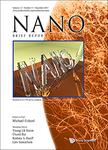版权所有:内蒙古大学图书馆 技术提供:维普资讯• 智图
内蒙古自治区呼和浩特市赛罕区大学西街235号 邮编: 010021

作者机构:China Univ Min & Technol Sch Chem & Environm Engn 11 Xueyuan Rd Beijing 100083 Peoples R China Xian Zhongdi Environm Technol Co Ltd Xian Geol Survey Ctr China Geol Survey Youyi East Rd Xian 710054 Shanxi Peoples R China Chinese Acad Sci Res Ctr Ecoenvironm Sci 18 Shuangqing Rd Beijing 100085 Peoples R China Tsinghua Univ Sch Environm 30 Shuangqing Rd Beijing 100084 Peoples R China
出 版 物:《NANO》 (Nano)
年 卷 期:2019年第14卷第5期
核心收录:
学科分类:07[理学] 08[工学] 0805[工学-材料科学与工程(可授工学、理学学位)] 0702[理学-物理学]
主 题:Nano-zero-valent iron micro-electrolytic dichloromethanesulfonic acid
摘 要:Composite carbon-based nano-zero-valent iron materials not only have excellent characteristics of nano materials, but also solve the difficulty of recycling nano materials after use, and overcome the shortcomings of the nano materials. The introduction of copper increases the redox reaction activity of the micro-electrolytic material and expands the applicable pH range of the reaction environment. In the range of pH = 3-9, the removal efficiency of dichloromethanesulfonic acid (Cl-2-MSA) was maintained at 95.5-99.7% after 30 min. Continuous dynamic simulation experiments verified that the composite carbon-based nano zero-valent iron material has a stable removal effect on the target pollutants.